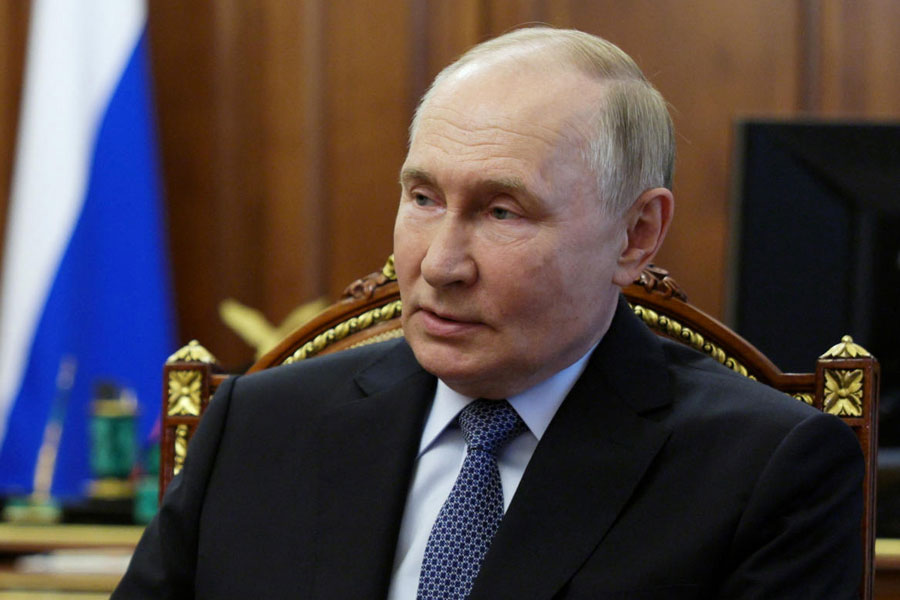In September, the Russian president, Vladimir Putin, visited Mongolia to celebrate the 85th anniversary of the joint victory on the Khalkhin-Gol river against the Japanese. This visit gained significant attention from the West given Mongolia’s status as a Rome Statute signatory, which aligns it with the International Criminal Court’s jurisdiction. The ICC had issued an arrest warrant against Putin over alleged war crimes in Ukraine. Mongolia, however, snarked at requests to put handcuffs on the president of a strategic partner.
The Western media saw Putin’s visit to Mongolia as Russia’s ploy to portray Russia-Mongolia ties as being untouched by the forces of international law. However, the reason for Putin’s visit, apart from increasing bilateral partnership, was to revive the Mongolian section of the Power of Siberia-2 pipeline known as the Soyuz Vostok pipeline; the 962-kilometre section of the pipeline is pivotal to the transhipment of 50 billion cubic metres of gas from Russia to China. The Mongolian national action plan 2024-2028 had made no mention of the construction of this pipeline, stoking concerns about the project stalling.
Putin highlighted the progress in Russia-Mongolia relations, noting a 21% increase in bilateral trade during the first seven months of 2024. Mongolia, strategically positioned between Russia and China, has become a crucial partner of Moscow since Russia’s increasing interest to pivot eastward. Both nations reaffirmed their commitment to advancing the China-Mongolia-Russia Economic Corridor programme. They also expressed mutual interest in collaborating under Russia’s Greater Eurasian Partnership and Mongolia’s Steppe Route. Several key agreements were signed, including an intergovernmental agreement on the reconstruction of the TPP-3 thermal power plant in Ulaanbaatar, agreements on petroleum product supplies and aviation fuel, and a memorandum of understanding focused on the conservation of Lake Baikal and the Selenga river.
Moscow is working on developing new pipeline routes towards the east to reduce its dependence on European markets. This initiative is evident in the plans for the Yakutia-Khabarovsk-Vladivostok pipeline, which was rebranded as the PoS. Managed by Gazprom, Russia’s major gas company, the PoS-2 pipeline is designed to transport natural gas from the Kovykta and Chayanda fields in Yakutia to Heihe in China.
The launch of the PoS-2 pipeline was announced during the 2019 visit to Mongolia by the then Russian prime minister, Dmitry Medvedev. Initially, PoS-2 did not include provisions for supplying Mongolian domestic consumers. But during his visit, Putin expressed openness to providing natural gas to Mongolia. Putin’s visit to Mongolia and the agreements signed during the visit dispel the narrative of the POS-2 pipeline stalling. However, with no conclusive agreement between Russia and China on modalities, such as gas pricing, sharing of construction costs, and other issues, the construction of the pipeline could be delayed.
Putin’s visit to Mongolia yielded a win-win situation for Moscow and Ulaanbaatar. For Moscow, the shrinking of markets due to sanctions imposed on Russia can be compensated by a new market emerging in Mongolia. For Mongolia, Russian investments and increasing cooperation between the two nations create a more competitive market in Mongolia and reduce its dependence on Chinese exports. China’s Belt and Road initiative has been crucial for Mongolia as it aims to boost connectivity, bringing Ulaanbaatar out of relative isolation. This increasing interaction between China and Mongolia has increased fears of a total Chinese monopoly in Mongolia; the Russian outreach is, thus, welcome.
Rajoli S. Jayaprakash is a Research Assistant at the Observer Research Foundation











